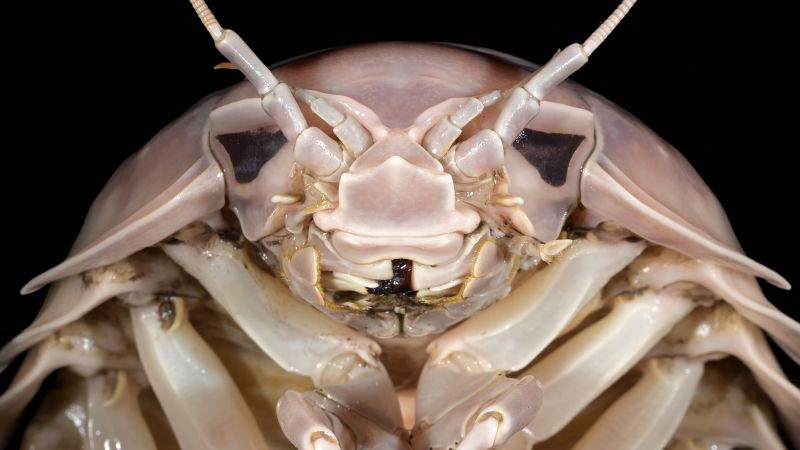In an exciting new development within marine biology, scientists have recently identified a new species of “supergiant” sea bug, known as Bathynomus vaderi. This discovery came about through an investigation into the rising popularity of these crustaceans as a delicacy in local Vietnamese cuisine. To study this growing trend, researchers procured specimens from fishermen and seafood restaurants in Vietnam, primarily focusing their efforts off the coast of Quy Nhon, a city situated about 50 nautical miles from the South China Sea.
The distinctive name Bathynomus vaderi was derived from the creature’s physical resemblance to the ominous helmet worn by Darth Vader, the legendary villain from the Star Wars franchise. The researchers detailed their findings in the journal ZooKeys, outlining that the anatomical structure of B. vaderi differed significantly from other known Bathynomus species found in the South China Sea. This new species is part of the isopod family, recognized for their robust exoskeleton and seven pairs of legs, and holds the distinction of being one of the largest isopods ever recorded—one specimen weighed over 1 kilogram (2.2 pounds) and measured 32.5 centimeters (12.8 inches) in length.
The evolutionary journey of these deep-sea crustaceans has resulted in their substantial growth compared to their shallow-water cousins in the cirolanid family. Dr. Conni Sidabalok, an esteemed researcher from Indonesia’s National Research and Innovation Agency and a co-author of the study, highlights the remarkable size disparity between the usual small isopods, which rarely exceed 2.5 centimeters (1 inch), and the newly identified B. vaderi. The larger size not only marks a fascinating biological development but may also provide these bottom-dwelling creatures with competitive advantages in their nutrient-recycling role within the deep-sea food chain.
Beyond their impressive size, researchers noted that B. vaderi were scavengers that primarily consumed dead animals on the ocean floor. As bottom dwellers, their presence is essential for maintaining the ecological balance by recycling valuable nutrients. Furthermore, experts speculate that the notable size of B. vaderi may play a crucial role in its survival in the extreme conditions of deep ocean habitats.
The study into B. vaderi also suggests that this species is part of a larger family, with only 11 “supergiant” and nine “giant” Bathynomus species currently recognized, and several more pending formal identification. B. vaderi stands out as the second supergiant isopod recorded in the South China Sea. However, researchers faced challenges in distinguishing it from similar species due to the depths of its habitat, necessitating extensive comparisons with museum specimens and DNA analysis.
As the popularity of Bathynomus has surged, especially types like B. jamesi, which are often compared to lobster in taste, the market value for these creatures has fluctuated. In 2017, larger specimens sold for up to 2 million Vietnamese dong (approximately $80), but as catches increased, prices decreased. The latest data indicates that by early 2024, specimens weighing 1 to 2 kilograms (2.2 to 4.4 pounds) were selling for about 1 million Vietnamese dong ($40).
Scientists are raising alarms regarding the sustainability of fishing B. vaderi, primarily due to their slow reproductive rates. With limited spawning capabilities—producing only hundreds of eggs that hatch into miniature versions of adults—overfishing could pose a significant threat to this species. Dr. Lanna Cheng, a professor emeritus of marine biology at the University of California, San Diego, expressed concern that if B. vaderi becomes a highly sought-after item, it could face threats to its existence.
The research team believes that B. vaderi may inhabit other regions of the South China Sea beyond Vietnam, but further explorations will take time. Sidabalok hopes that this discovery will lead to further research on Bathynomus populations and contribute to the development of sustainable fishing practices. She aspires to collaborate with regional scientists to further explore these marine ecosystems, emphasizing that there remains a wealth of knowledge yet to be discovered. The investigation into Bathynomus, particularly B. vaderi, opens up new avenues for ecological study and conservation efforts in deep-sea environments.



